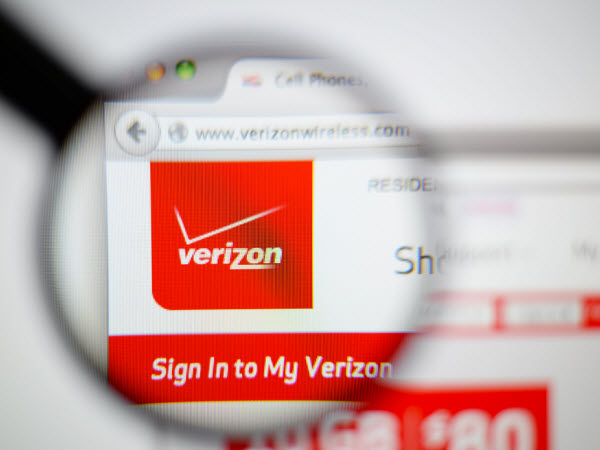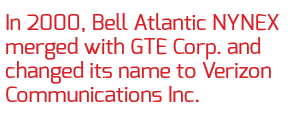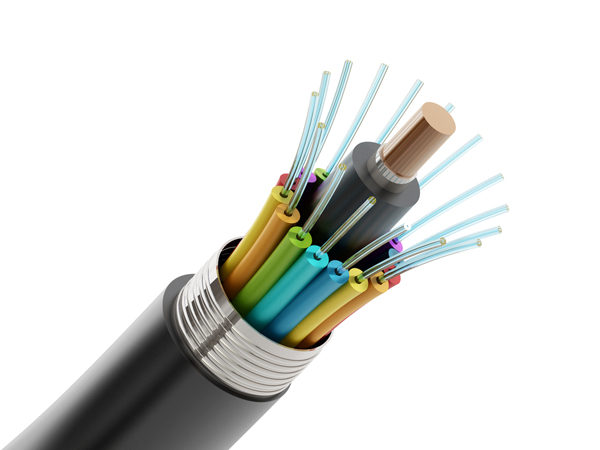Verizon ISP Review & Reader Survey Results
We asked readers to rate their Internet service provider based on price, performance, reliability and support. Here are the results for the only ISP in our series with mainstream availability of fiber-optic networks for high-speed Internet: Verizon.
Introduction
Last year, we asked Tom's Hardware readers to rate their Internet service providers (ISP). After receiving feedback from more than 3,100 audience members from across the United States, we chose the four most-voted companies for the Tom's Hardware ISP Review Survey.
Participants were asked to rate their ISP's price, performance, reliability and support on a scale of one to five stars, with one being the lowest possible score and five being the highest. We also averaged each category's total score and rounded each result to the nearest one-quarter star. Then, we provided the mathematical average of each score, allowing us to compare the companies later on.
Verizon is the only company in our series offering mainstream availability of fiber-optic Internet services (in addition to DSL options). After reviewing the ratings from 234 customers of Verizon's Internet services, it's time to determine how it stacks up in Tom's Hardware's ISP Review.
History
In 1984, there was a break-up of the massive Bell Operating Co. that previously monopolized the communications industry. Seven "Baby Bell" companies were created, five of which were eventually reacquired by AT&T. The only two remaining Baby Bells were Bell Atlantic and NYNEX.
In 1995, Bell Atlantic formed a joint partnership with NYNEX, and by 1997, the two companies merged in a $24 billion deal to become the second-largest telephone company in the U.S, serving more than 35 million customers from Maine to Virginia. This company was venturing into the expanding wireless communications segment, and was poised to obtain a healthy market share in the Northeastern regions.
In 2000, Bell Atlantic NYNEX merged with GTE Corp. and changed its name to Verizon Communications Inc. The $52 billion merger took almost two years to complete, with 27 state regulatory commissions, the U.S. Department of Justice, the Federal Communications Commission and various international agencies evaluating and providing clearance for the deal.
Up until that point, the company was mostly focused on wireless communications, launching its 3G network in 2002. It wasn't until 2005 that Verizon launched its FiOS all-fiber broadband Internet and TV service. FiOS is a fiber-to-the-premises (FTTP) telecommunications service, first introduced in Keller, Texas and Herndon, Virginia in late 2005. Coverage later expanded to Massachusetts, New Hampshire, Rhode Island, New York, New Jersey, Indiana, Pennsylvania, Delaware, Maryland, the District of Columbia, Virginia, Florida, California, Oregon and Washington; even today, the coverage area continues to grow.
Get Tom's Hardware's best news and in-depth reviews, straight to your inbox.
Verizon spent the remainder of the decade acquiring communications companies to expand its customer base. These purchases included companies like MCI in 2006, CyberTrust in 2007 and Rural Cellular in 2008.
In 2010, Verizon deployed its 4G LTE network, starting in 39 major markets and covering more than 110 million people on the first day. This expansion tightened the company's grip on the wireless communications industry.
After Superstorm Sandy, which affected many parts of the Atlantic Coast, Verizon rewired the entire networking grid of Lower Manhattan with 100 percent fiber-optic lines, expanding its FiOS home Internet service to the largest city in the country.
The past two years were impressive for Verizon. The company bought out Vodafone's 45 percent stake in 2014 for an astounding $130 billion. As a wholly owned entity, Verizon was able to take advantage of the changing market dynamics and, in May 2015, announced the acquisition of AOL, one of the early pioneers of the Internet service industry.
As of Q3 2015, Verizon reported 6.9 million home Internet service customers, more than two-thirds of whom are subscribing to FiOS Quantum Internet (fiber-optic) plans. With strong growth projected for its FiOS offerings, Verizon continues to expand its reach and appeal with incredibly fast fiber-optic Internet access.
Technology
Verizon's home Internet services are based on two different technologies: DSL and fiber-optics. These services are available in many of the same regions, with the exception being Rhode Island, which does not appear to offer fiber-optic Internet plans.
Fiber-optic connections transport data at extremely high speeds with low latency using light, providing industry-leading download and upload speeds. This is an incredible advantage over cable- and DSL-based Internet services; upload speeds for those older technologies peak at a fraction of advertised download speeds for fiber-optics networks.
Verizon high-speed (DSL) Internet service is available to an estimated 62 million homes, and FiOS fiber-optic services are available to an estimated 41 million people. Here's a table of Verizon's Internet service plans, speeds, prices and primary service regions:
| Speeds (In Mb/s) | Prices (Per Month, Non Promotional) | Primary Service Regions | Technology |
|---|---|---|---|
| 1, 3, 7, 15, | $15, $30, $30, $30 | CA, CT, DE, DC, FL, IN, MA, MD, NJ, NY, NC, PA, RI, TX, VA | DSL |
| 50, 100, 150, 300, 500 | $55, $65, $75, $175, $275 | CA, CT, DE, DC, FL, IN, MA, MD, NJ, NY, PA, RI, TX, VA | Fiber-Optic Internet |
Although DSL pricing falls in the middle of the road, Verizon no longer sells individual DSL service packages; they can only be purchased along with a landline phone service. In addition, the company no longer sells fixed-speed DSL plans above 1 Mb/s. The $30-per-month plans (up to 3, 7 and 15 Mb/s) are not guaranteed to be available, and your top speed depends on the strength and condition of the local network. Performance and top speeds naturally vary by region, and it's more or less the luck of the draw for DSL connections from Verizon.
Derek Forrest was a contributing freelance writer for Tom's Hardware. He covered hardware news and reviews, focusing on gaming desktops and laptops.
-
okcnaline How the **** did Verizon get top notch scores?!!! Their phone bootloader unlock policy and dirty CS practices should make them the worst!!!Reply -
c0rr0sive Wait, did Toms forget to mention that Verizon was forced to deploy fiber since they refused to repair the aged copper lines that they had neglected for years? This looks more and more like an advertisement campaign.Reply -
burtzum I was paying $50 a month for 25/25 FIOS about two years ago. It has gradually raised to $67 now. I saw on their page that even 50/50 should be less, at $55, so I was about to call them and ask for my speed to be raised since I am apparently already paying for it. Then I decided against it, as I noticed an additional $10 a month modem rental fee in the fine print. Tack on that, taxes, and all the other BS add-on fees and I'm sure it would come out to over $70 a month for the 50/50 plan in actuality. And I don't even want 50/50, I'm fine with 25/25. But they don't offer 25/25 anymore, and I'm sure jacking up my price is an attempt to get me to accept the new 50/50 plan with its higher price.Reply
I also remember when I was still fairly new with them they were constantly trying to get me to sign up for automatic billing. I was reluctant because they had overcharged me at one point. Eventually I ended up with automatic billing anyway, as it was apparently a requirement in order to switch to paperless billing. Things go smoothly for a couple years, then one day I get something in the mail saying I haven't paid for 3 months and owe a bunch of late fees. Their automatic billing system broke down and they expected me to pay late fees over it. Guess it serves me right, not looking out for and paying close attention to my Verizon bill every month, given my past experience. Since then I've been paying manually every month like I wanted to in the first place. So automatic billing wasn't a requirement after all, as they claimed. Or they've changed their policy since then. *shrug* At least they haven't yet tried to charge me for a modem that I returned, claiming to have no record of it, I guess... as Comcast did years ago.
All cable companies are absolute garbage. Sometimes I wish the government would seize it all and take over, but our government is so incompetent it would probably end up worse. -
razor512 If you are ever charged a rental fee, then buy your own equipment, it will pay for its self within a year.Reply
Your location also highly influences your performance. If you have the choice between fios and time Warner, then you get around 5-10 more performance than advertised. if there is no alternative, then you get 5-15% under what you pay for, with additional slowdowns during prime time (with speeds as low ad 2mbit/s on a 100mbit plan).
When there is a lack of competition, any ISO will take that as an opportunity to screw you over. -
xvegan I've been around the USA enough to know that in any market, the lack of competition will raise prices and cause a condescending attitude from the carrier's billing depts and help desks. This applies to all of them. Some are so ridiculous as to charge almost $100 for a help desk inquiry regarding a service outage.Reply
Competition is the name of the game. When there are alternatives it's amazing how nice they become and will likely lower your monthly bill to keep you as a customer. -
Anders235 Those prices for Fios look about $20 low, at least for Texas. $65 p/m for 50-50 was all I could get, then 75/75 (not shown in this article), and up.Reply
Which seems high.
Quality of the service is excellent 100% throughput up and down is normal and reliability is outstanding.
Customer Service is extremely poor. It takes hours to get ahold of tech support and the disconnect between Verizon Central and your local Verizon Fios center is near total so its very hard to get them to agree on the phone that there might be a problem in your area. Luckily, problems are very rare...
The only alternative to the service is Time Warner, which is terrible in every single respect and therefore not an alternative. -
wussupi83 Really Toms, an Ad between every section of the SAME article. That's an A**hole move, especially when they are sound producing videos. I will note related to the article - I do find Verizons networks pretty reliable for Internet. Although a few years ago I had FIOS 150Mbps service and Youtube was without a doubt throttled, as every other video service was fine except Youtube, it didn't matter if you chose 240p or 1080p, you had to wait for buffering. That was certainly intentional. I read recently that you could update the DNS to a 3rd party and it solved the problem but I no longer have the service to verify.Reply -
dennphill Poor review. How do you compare one provider? C'mon now! I was up in Alexandria, VA when they were putting fiber in the neighborhood..but moved away before I could dump Cox Cable and see how FIOS was. (I was told it would be better/cheaper, etc.) So now I'm in Panhandle, FL and (again) with Cox the only show in town (unless I want Dish or DirecTV and phone line Centruy Link). Worthless article, because it will be a while before fiber gets to my neighborhood....and Cox is reliably giving me "Preferred" access (promising up to 50 Mbps d/l (and 6.5 u/l) and Ookla says I get upwards of nearly 60 Mbps and nearly 7 Mbps. Century Link, OOTH, promises me only 6 MBPS d/l (and says that's all I really need)! Sos - though I hate it - I stick with Cox - the devil I already know.Reply -
rayden54 I do wonder how much these results are skewed by availability.Reply
For example, back when we had Verizon, speeds were terrible, prices were terrible (the up to 3 Mbps plan cost something like $50 a month), and support was terrible, but since they were the only ISP around, that's what we had. Only reason we're not still with Verizon is that they sold our area to Frontier.
It's pretty much the same deal with Frontier too except the Up to 3, 5, and 7 Mbps plans are gone and everyone gets the 1 Mbps plan. I don't think they can offer more without redoing the cables--which of course they won't do.




